Recently, when the mobile phone market ushered in another round of "new machine eruption", the replacement frequency of mobile phone products has accelerated again, and it is very important to choose a mobile phone that is suitable for you. But beyond memory, flash memory, and processors, how much do you know about your phone's screen? Today I bring you a screen pure dry goods knowledge point arrangement.
Mainstream mobile phone screens are mainly divided into several types, each type has its own unique characteristics and advantages. The following is a detailed introduction to the mainstream mobile phone screen:
一. LCD screen
LCD (Liquid Crystal Display) screen, that is, liquid crystal display, is a more traditional screen type. Although OLED screens have gradually occupied the mainstream in recent years, LCD screens are still widely used in some mid - and low-end mobile phones. LCD requires the support of backlight when displaying, and the light needs to generate polarization through two layers of glass and substrate and various optical membranes, directional membranes, and color filters, and there will inevitably be losses in brightness and color. In LCD, TFT, TFT-LCD (IPS) are a display technology of LCD.
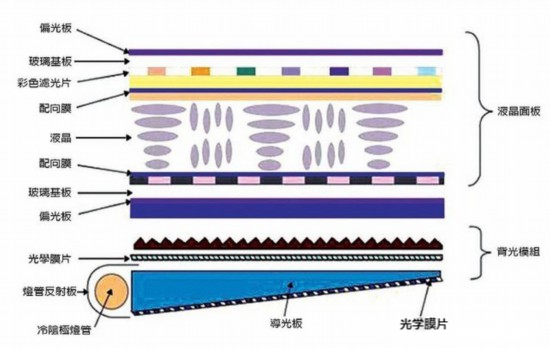
LCD basic structure
LCD requires the support of backlight when displaying, and the light needs to generate polarization through two layers of glass and substrate and various optical membranes, directional membranes, and color filters, and there will inevitably be losses in brightness and color. What we call TFT is the abbreviation of thin-film transistor. In LCD, TFT deposits a Thin film on a glass substrate as a channel area to improve the image quality through thin film transistor technology.
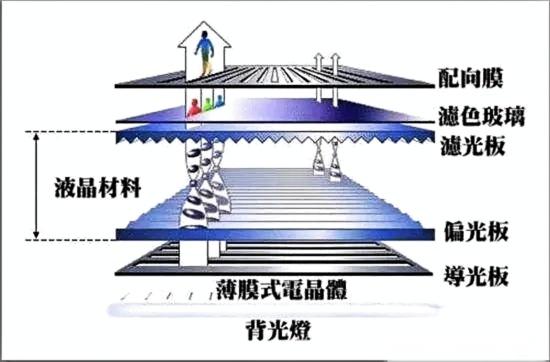
Eye protection performance: LCD screen usually uses DC dimming mode, this dimming mode under the screen brightness uniform, not easy to cause visual fatigue, more friendly to the eyes. At the same time, the LCD screen does not have the problem of burning the screen, which is an important advantage for users who use the phone for a long time.
Contrast and viewing Angle: While LCD screens may not be as good as OLED screens in terms of contrast and viewing Angle, LCD screens generally perform better in bright environments with relatively little pressure on the eye.
二. OLED screen
OLED (Organic Light Emitting Display) screen, that is, organic light emitting diode screen, when it comes to OLED is not so complicated. Unlike LCD, OLED has the characteristics of self-luminescence, and has the advantages of wide viewing Angle, high contrast, low power consumption, high reaction rate, full color, and simple manufacturing. According to the driving method, OLED can be divided into passive OLED (PMOLED) and active OLED (AMOLED). In recent years, with the continuous progress of technology and cost reduction, OLED screens have gradually become mainstream mobile phone screens.
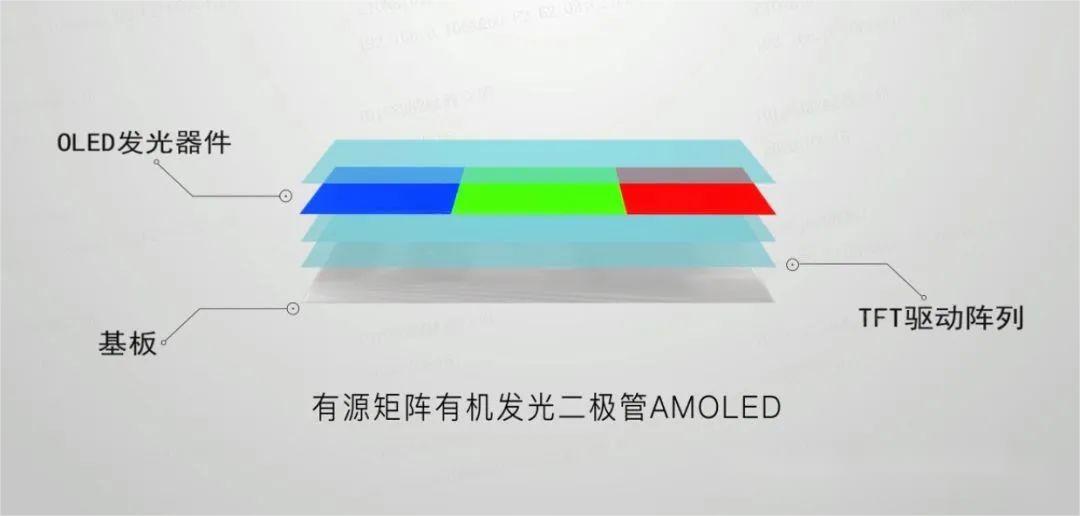
AMOLED uses a Pentile pixel arrangement, which results in a more granular feel at the same resolution. And because of the loss of backlight support, the brightness of the AMOLED screen can only be supported by pixels that can self-light, so the performance of the AMOLED screen in the outdoor environment is generally.
At present, AMOLED screens have roughly developed to three generations: AMOLED, SuperAMOLED, SuperAMOLEDPlus. Compared with the traditional AMOLED, SuperAMOLED cancels the architecture design of the touch sensor layer and the display layer, and is directly the original touch panel, which can bring more sensitive operation, and the response speed is one-thousandth of that of other materials. In addition, the absence of glass cladding also brings better sunlight display and better color expression. It can be said that it makes up for all the shortcomings of the previous two screen materials.
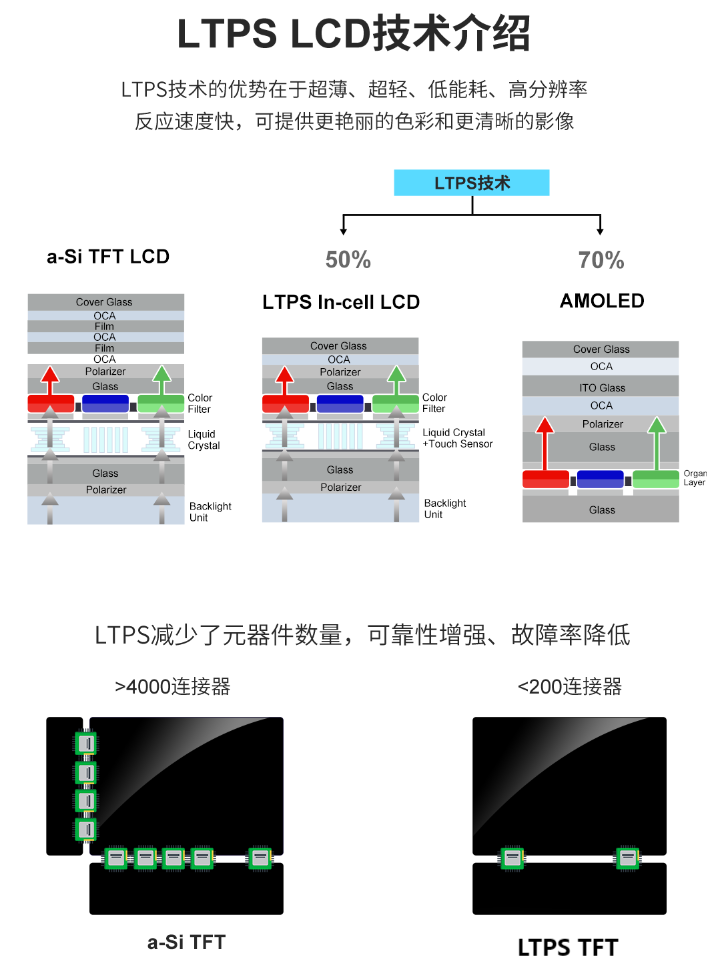
SuperAMOLEDPlus further improves the Pentile pixel arrangement of the previous SuperAMOLED screen, and the RGB arrangement is more delicate, which solves the problem of large display particles that are criticized by the majority of users. In addition to the improved resolution, the display effect is also developing in a more detailed direction.
Bright colors: OLED screen color performance is very good, deep black, high color contrast, can present a more delicate picture effect.
Flexible display: OLED screen has the characteristics of flexible display, can be applied to curved screen, folding screen and other new mobile phone design, to bring users a richer experience.
Power saving: The OLED screen can self-light, and each pixel can be independently controlled on and off, so it can achieve more accurate brightness control and more power-saving display effect.
三. AMOLED screen
AMOLED (Active Matrix Organic Light Emitting Diode) screen, that is, active matrix organic light emitting diode screen, is an improved version of OLED screen. The AMOLED screen adds an active matrix drive circuit on the basis of the OLED screen, making the screen more smooth and clear when displaying dynamic images. At the same time, the AMOLED screen also has the advantages of bright colors, high contrast, and large viewing Angle. However, using the AMOLED screen for a long time may cause the screen to burn, creating an additional burden on the eyes.
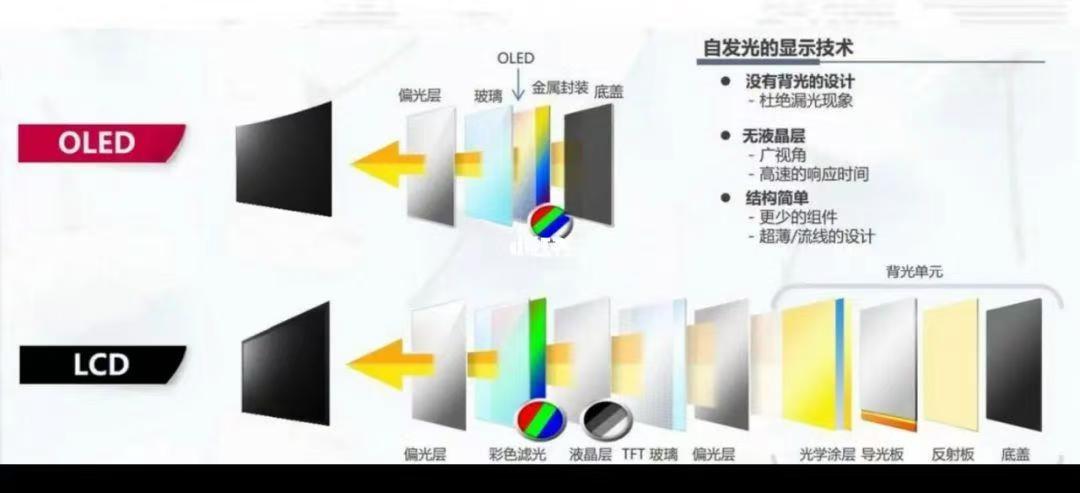
四.Other new screen technologies
In addition to LCD, OLED and AMOLED screens, there are a number of new screen technologies that are constantly being developed. For example:
Mini LED screen: The Mini LED screen uses smaller LED beads as backlight for more precise brightness control and higher contrast performance. At the same time, the Mini LED screen also has the advantages of low power consumption and long life.
Micro LED screen: Micro LED screen is a more advanced display technology, it uses micron-level LED beads as pixels, can achieve higher resolution and more delicate display effect. However, at present, the technical difficulty and cost of Micro LED screens are still high and have not been widely used.
To sum up, the mainstream mobile phone screen types mainly include LCD, OLED, AMOLED, and new screen technologies such as Mini LED and Micro LED in development. Each type has its own unique characteristics and advantages, and users can choose the type of mobile phone screen that suits them according to their needs.
Company Profile
The story behind the phone screen
Mobile phone screen material difference
Contact: Mr Feng
Phone: +86-17688393944
Tel: +86-13688848901
Email: 104279822@qq.com
Add: Room 701-10, Rujun Building, No. 105 Zhongxing Road, Ma'antang Community, Bantian Street, Longgang District, Shenzhen